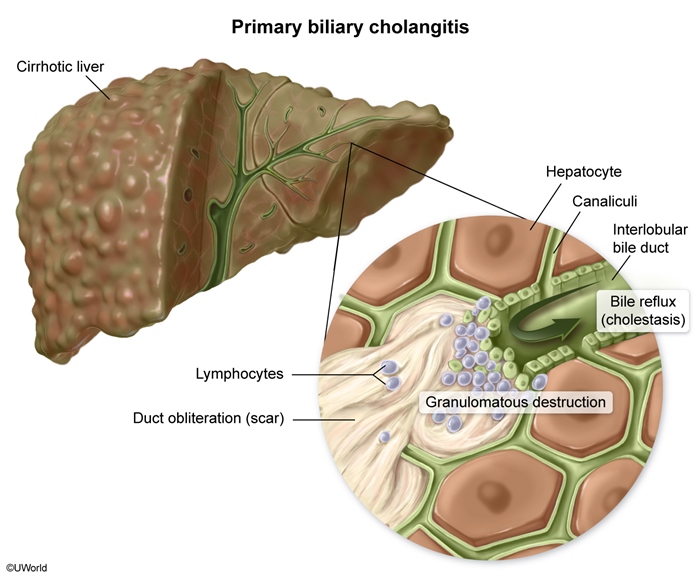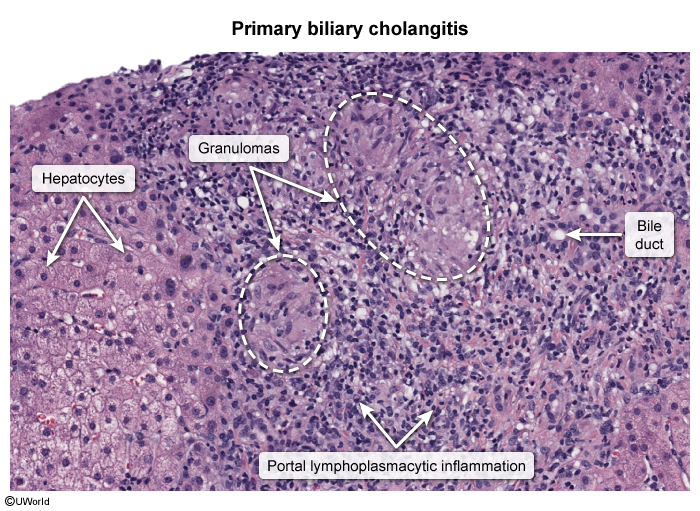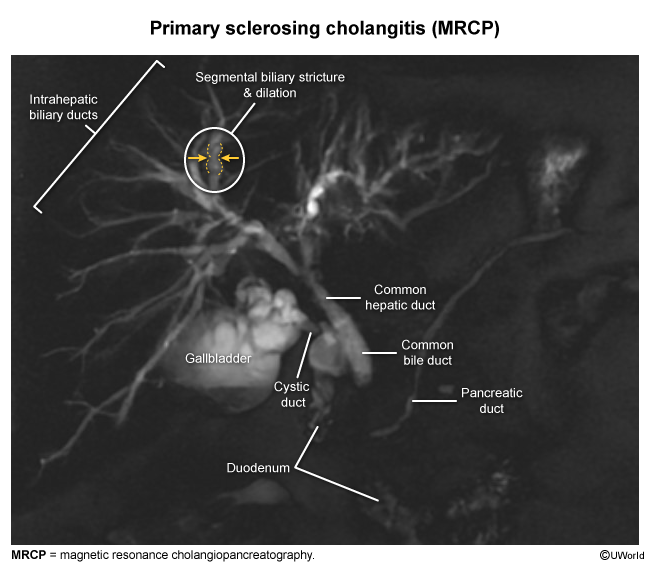Primary Biliary Cholangitis
Article Sections
Introduction
Primary biliary cholangitis (PBC), formerly primary biliary cirrhosis, is a chronic autoimmune liver disease characterized by progressive destruction of intrahepatic bile ducts, leading to cholestasis, liver fibrosis, and eventually cirrhosis. It predominantly affects middle-aged women.
Pathophysiology and pathology
PBC is characterized by T-cell–mediated destruction of the small intralobular bile ducts within the liver, leading to chronic ductal inflammation and obliteration (Figure 1). Histologically, PBC is characterized by a dense lymphocytic infiltrate along the portal tracts with granulomas that obliterate the interlobular bile ducts (ie, florid duct lesions) (Image 1). Persistent inflammation and ductal destruction result in hepatic fibrosis and ultimately cirrhosis.
The hallmark autoantibodies seen in PBC are anti-mitochondrial antibodies (AMA), which target the M2 subtype of mitochondrial autoantigens. AMA has a high sensitivity (~95%) and specificity (~95%) for PBC.
Continue Learning with UWorld
Get the full Primary Biliary Cholangitis article plus rich visuals, real-world cases, and in-depth insights from medical experts, all available through the UWorld Medical Library.
Figures

Images

